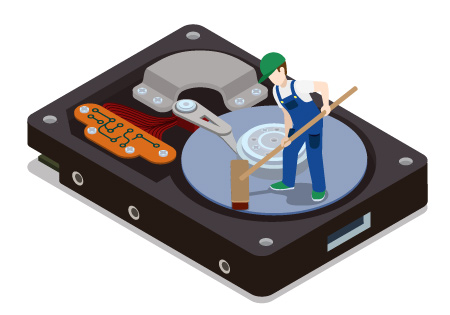
The constant change of information in the world and the frolics of groups like Anonymous and LulzSec over the past few months have only but assured data breaches to be an inevitable truth. If companies like RSA Security, one of the global leaders in information security, are not safe, then how would the small and medium enterprise sector fare against such threats? The thought of a resistant and impermeable computer or network may be wishful thinking, but specific measures can be taken to achieve the optimum data security, protect data, and maintain privacy better.
Various data breaches involve varied scenarios. This article details information on how data leak can be prevented to external drives.
External drives may include USB flash drives, SD cards, CDs/DVDs/Memory Cards/Storage drives, network drives, non-system drives, etc. You need to block all such drives and devices that do not belong to you. With the right software, you can share your PC or laptop with anyone without fear of data theft. Advance data leak software also lets you create a monitoring and management list of authorized devices and drives and their passwords.
One of the most common ways to gain unauthorized access to information is by using external drives that easily connect to open ports in PCs or laptops. And one of the common forms of data leakage is personally identifiable information (PIN), the leakage of which is a major reason of identity theft. Whether in an effort to gain exposure or to stay in touch with friends, individuals as well as business owners often tend to leave a trail of identifiable information over the Internet and other networks, which lead to unauthorized and scrupulous elements to trace your whereabouts, history and finally your identity.
And along with your identity, your confidential details go with it. Your bank details leaking out to external drives may lead to bank frauds due to an obvious gap in protection or monitoring of your data and information. Poor or redundant emailing standards are being used as the main form of communication. Many individuals and business owners still think that email is a safe way to communicate confidential information. Whereas, the harsh reality is that emails are generally available to more than just the recipients. Intercepting emails through attached external devices is not difficult and happens more often than we would like to think.
Another possibility to gain access to your data and information by using external drives is when your data and information is not password protected. Failure to password protect with a pass phrase (recommended) forms one of the leading causes for the theft of data. It is strongly recommended to use Pass phrases rather than simple passwords. Pass phrases include several words and are far more secure than passwords.
The use of software to block access to your PCs or laptops or computers on a network enables you to blocking any and all devices that you do not wish to access your computers, maintain complete data integrity of your information when you do transport your data, protect your files, folders, pictures, copyrighted materials, project plans, and other confidential data from being copied to or leaked to unauthorized external devices, have a lightweight and feature-rich application that does not interfere with your existing security protocols, secure your data and sensitive information with password protection, maintain confidentiality of your data at all times, monitor all hack attempts, and monitor logs and reports for activities.
How Can Data Leakage Be Prevented?

Data leakage can be prevented by implementing a variety of security measures, such as:
1. Encryption: Encrypting data can prevent unauthorized access and protect data from being stolen.
2. Data Access Controls: Implementing access control mechanisms can help limit access to sensitive data.
3. Data Loss Prevention (DLP): DLP solutions can help detect and prevent data loss by monitoring data activity and alerting administrators when suspicious activity is detected.
4. Network segmentation: Segmenting a network into smaller parts can help limit access to sensitive data and reduce the risk of data leakage.
5. Regular Audits: Regularly auditing systems and networks can help identify and address any potential data leakage issues.
6. Monitoring and Incident Response: Implementing monitoring and incident response processes can help detect and respond to data leakage incidents quickly.
Most Common Cause Of Data Leakage
The most common cause of data leakage is human error. This can include errors in the handling of sensitive data, such as sharing information with unauthorized individuals, failing to encrypt data, or leaving confidential data exposed.
Types Of Data Loss Prevention
1. Technical Controls: Technical controls involve using technology to prevent data leakage. These can include firewalls, encryption, authentication, access control, and user activity monitoring.
2. Administrative Controls: Administrative controls involve setting policies and procedures that help protect sensitive data. This can include data classification, user access control, and regularly reviewing access logs.
3. Physical Controls: Physical controls involve physically securing areas containing sensitive data. This can include locks, alarms, and other physical safeguards.
Best Solution To Prevent Data Loss From A Database
The best solution to prevent data loss from a database is to implement a combination of technical, administrative, and physical controls. Implementing a combination of these controls can help protect your database from data loss.
How Do You Handle Data Leakage?
Data leakage can be handled by implementing a combination of technical, administrative, and physical controls.
Detect And Prevent Data Leakage
To detect and prevent data leakage, organizations should implement a combination of technical, administrative, and physical controls. These controls should include measures such as encryption, access control, data masking, and data monitoring. Additionally, organizations should also implement regular audits and reviews of their data security policies and procedures. This will help ensure that any data leakage is detected and addressed in a timely manner.
What is a data leakage issue?
Data leakage is the unauthorized transfer of confidential or sensitive information.
First Step In Preventing Data Loss Or Leakage
The first step in preventing data loss or leakage is to implement strong data security controls. These controls should include measures such as encryption, access control, data masking, and data monitoring.
What Is Data Leakage And Why Should We Avoid It?
Data leakage is the unauthorized transfer of confidential or sensitive information. It can occur in a variety of ways, including through unsecured networks, malicious software, or even through careless employee behavior. Data leakage can lead to financial losses, reputational damage, and even legal issues. Therefore, it is important to ensure that data is kept secure and that any data leakage is detected and addressed in a timely manner.
Taking a good look at these scenarios, and then following the direction provided, you can easily be on your way to protecting your data from leaking to unauthorized external drives and maintaining a strict access control for all devices and drives that do not belong to you or which you have not given access to. By doing this, you can easily prevent a possible tragedy of data and privacy breach incidents.
